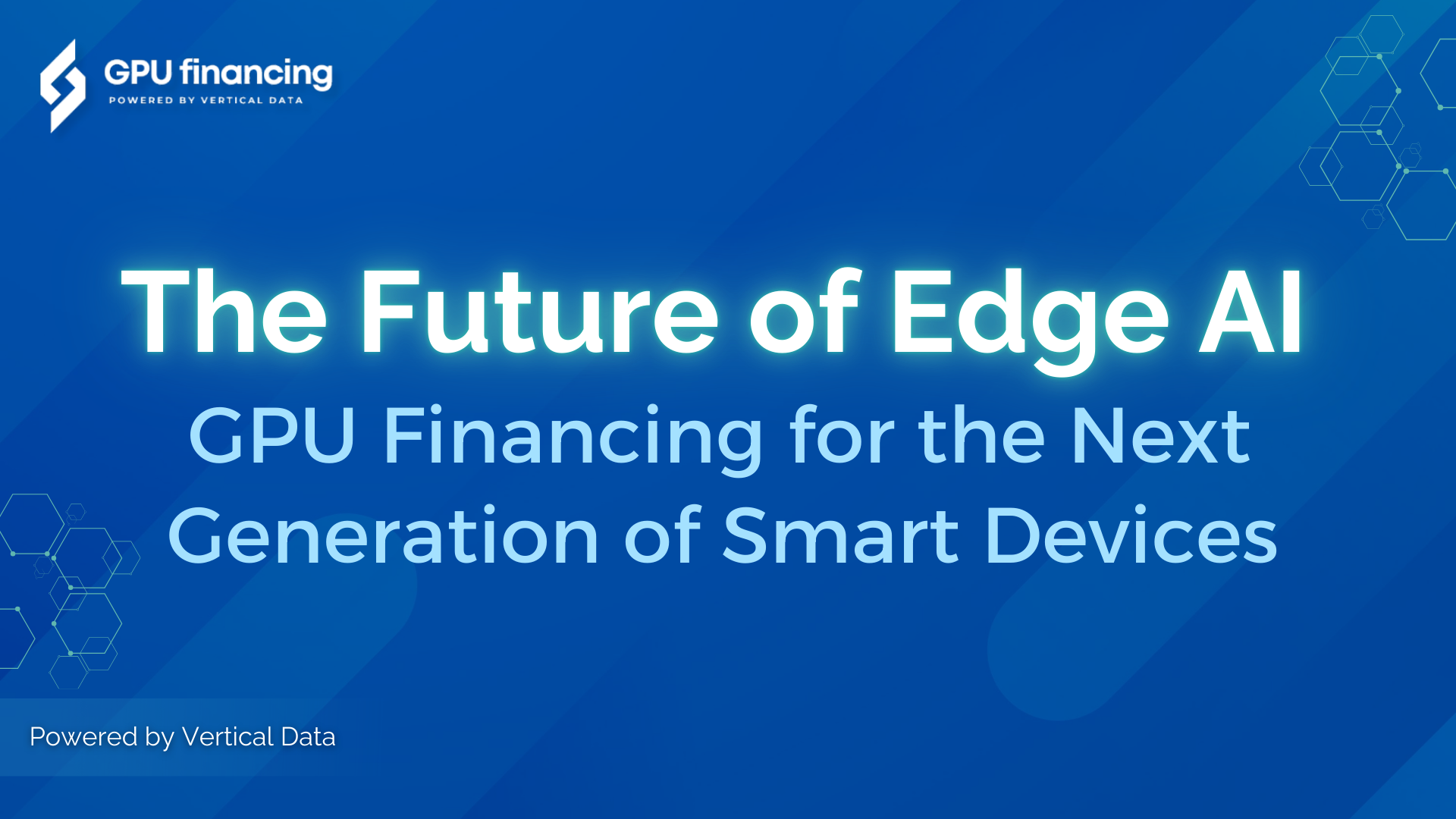Introduction
The landscape of artificial intelligence is rapidly expanding beyond centralized cloud data centers. A new frontier, known as Edge AI, is emerging, bringing the power of AI directly to devices at the “edge” of the network, closer to where data is generated and acted upon. This paradigm shift is enabling a new generation of smart devices, from autonomous vehicles and industrial IoT sensors to intelligent cameras and personalized health monitors. However, deploying sophisticated AI models on these edge devices often requires significant computational horsepower, making Graphics Processing Units (GPUs) a critical component. As Edge AI continues its rapid ascent, understanding the financial implications and available financing solutions for this specialized GPU infrastructure becomes paramount.
Edge AI: Bringing Intelligence Closer to the Source
Edge AI refers to the deployment of AI algorithms and models directly on local edge devices, enabling real-time data processing and analysis without constant reliance on cloud infrastructure. This approach offers several compelling advantages:
- Low Latency: Processing data locally eliminates the time delays associated with transmitting data to and from the cloud, enabling instantaneous decision-making crucial for applications like autonomous driving or real-time anomaly detection.
- Enhanced Security and Privacy: Sensitive data can be processed and stored on the device itself, reducing the risk of data breaches during transmission and enhancing user privacy, especially important in sectors like healthcare and defense.
- Reduced Bandwidth Consumption: By processing data at the source, Edge AI minimizes the need to send vast amounts of raw data to the cloud, significantly reducing bandwidth requirements and associated costs.
- Offline Capabilities: Edge devices can operate autonomously even without continuous internet connectivity, ensuring uninterrupted AI functionality in remote or disconnected environments.
The GPU Imperative in Edge AI
While some simpler AI tasks can run on CPUs or specialized Neural Processing Units (NPUs) at the edge, more complex AI models, particularly those involving deep learning, computer vision, and natural language processing, demand the parallel processing capabilities of GPUs.
GPUs are uniquely suited for the intensive computations required for AI inference and, in some cases, on-device training. As smart devices become more sophisticated and AI models grow in complexity, the need for powerful yet energy-efficient GPUs at the edge becomes increasingly critical. This has led to the development of specialized edge AI chips and modules that integrate powerful GPUs, enabling advanced AI functionalities directly on the device.
Financial Considerations for Edge AI Deployment
The transition to Edge AI, while promising immense operational benefits, introduces new financial considerations, particularly around the acquisition of GPU-accelerated hardware. Unlike centralized cloud services where compute resources are rented on a pay-as-you-go basis, deploying Edge AI often involves significant upfront capital expenditure (CapEx) for purchasing and installing specialized hardware across numerous distributed locations. This can be a substantial barrier for businesses, especially those looking to scale their Edge AI initiatives rapidly.
Key financial challenges include:
- Upfront Hardware Costs: High-performance GPUs and the integrated systems designed for edge deployment can be expensive, requiring considerable initial investment.
- Deployment and Maintenance: The costs associated with deploying, managing, and maintaining a distributed network of edge devices with integrated GPUs can add to the overall expenditure.
- Technology Obsolescence: The rapid pace of innovation in AI hardware means that today’s cutting-edge GPUs could be superseded by more efficient or powerful alternatives in a relatively short timeframe, posing the risk of early obsolescence for significant hardware investments.
Financing the Next Generation of Smart Devices
To overcome these financial hurdles and accelerate the adoption of Edge AI, flexible financing solutions are becoming increasingly vital. These solutions help businesses manage the capital outlay and optimize their investment in distributed GPU infrastructure:
- Equipment Leasing: Leasing allows companies to acquire the necessary Edge AI hardware, including GPU-accelerated devices, without a large upfront purchase. This converts CapEx into predictable operational expenses (OpEx), preserving working capital while providing the flexibility to upgrade technology as new generations of edge AI hardware become available.
- Asset-Backed Financing: For larger deployments or for manufacturers of smart devices integrating GPUs, asset-backed financing can provide capital by leveraging the hardware itself as collateral. This can offer favorable terms and longer repayment periods, making significant hardware acquisitions more manageable.
- Hardware-as-a-Service (HaaS) Models: Similar to cloud services, HaaS models for edge devices allow businesses to pay for their GPU-accelerated hardware through a subscription or usage-based model. This shifts the financial burden from capital expenditure to operational expenditure, providing greater financial agility and scalability.
These financing strategies empower businesses to deploy Edge AI solutions more affordably and efficiently, enabling them to harness the power of AI at the source without straining their financial resources.
Conclusion
Edge AI is poised to transform industries by bringing intelligent capabilities directly to smart devices. From enhancing real-time decision-making to improving data privacy and reducing operational costs, the benefits are clear. However, the successful widespread adoption of Edge AI hinges on addressing the financial challenges associated with acquiring and deploying GPU-accelerated infrastructure.
Flexible financing solutions are the key to unlocking this future, enabling businesses of all sizes to invest in next-generation smart devices and drive innovation at the edge. As the demand for on-device intelligence grows, so too will the importance of strategic financing in shaping the future of AI.
